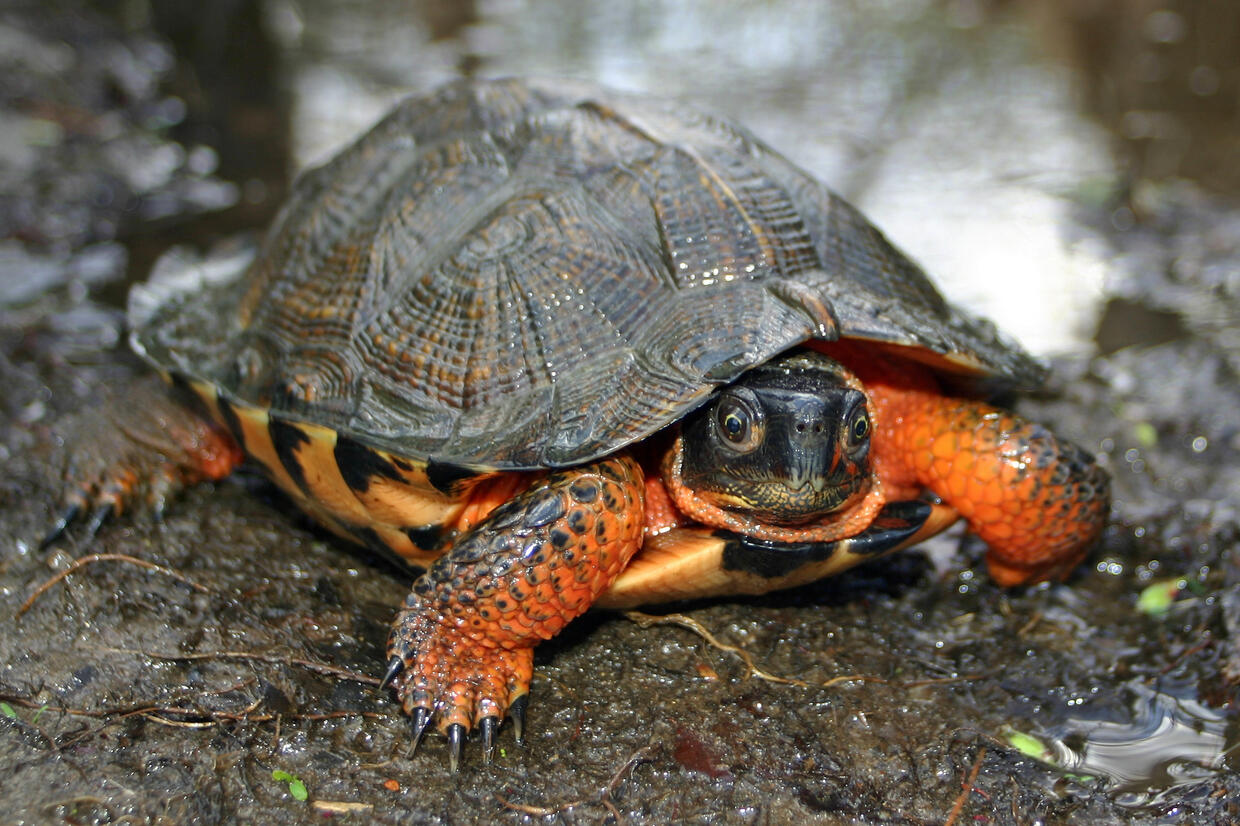The wood turtle is a listed species in the State Wildlife Action Plan (SWAP). Find detailed information on the wood turtle, its threats, and what Massachusetts is doing to conserve this animal in its official factsheet.
Fast facts
Common name: Wood turtle
Scientific name: Glyptemys insculpta
Range in MA: Central and Western Massachusetts
Conservation status: special concern (MESA), under review (US ESA)
Fun fact: To find food, wood turtles will do 'worm stomping' to mimic rainfall to trick earthworms and others to come to the ground's surface.
Similar-looking species: Eastern box turtle and Blanding's turtle
Identification tip: The wood turtle is distinctive in its combination of a typically brown shell, orange front limbs, and plastron fused solidly to the carapace by a bony “bridge.”
Description
The wood turtle are more commonly encountered in central and western Massachusetts. The wood turtle is a medium-sized freshwater turtle(14–20 cm; 5.5–8 in) recognized by orange coloration on the legs and neck. The carapace (upper shell) is usually rough and sculpted, with a “woodworked” appearance, and each scute rises upwards in an irregularly shaped pyramid of grooves and ridges. The carapace is oval- to egg-shaped, brown, tan, or grayish-brown, with a midline ridge (or ‘keel’). The larger scutes of the carapace are often patterned with black and yellowish markings. The plastron (lower shell) is cream to yellow with irregular dark patches on each scute’s outer, posterior corner. The head is black, but the beak and chin are streaked with yellow or gray. In Massachusetts, the forelegs are a rich orange-red with black outer scales. Males have an oval, concave shape to their plastron, a thick and long tail, and a broader and more robust head than females. Hatchlings have a dull-colored shell that is broad and low, a tail that is almost as long as their carapace, and neck and legs that lack orange coloration.
